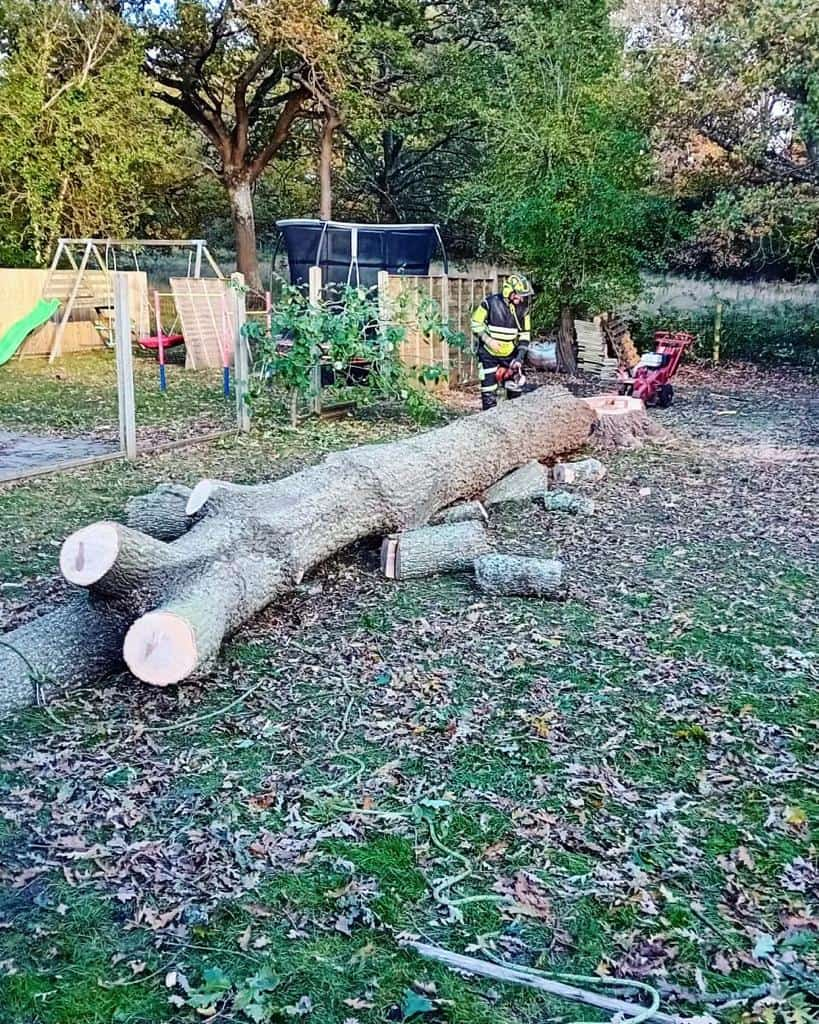Introduction
In towns like Fareham, Hampshire, where character properties and period gardens are part of the charm, maintaining historic features such as timber fencing and dry stone walls isn’t just an aesthetic choice—it’s a responsibility. One often overlooked but highly effective way to preserve these elements is through regular and professional hedge cutting.
At LM Tree Surgery Fareham, we understand the value of heritage landscaping. When hedges are left unmanaged, they can cause significant—and sometimes irreversible—damage to traditional fences, boundary walls, and other hard landscaping features. Let’s explore how routine hedge maintenance can offer crucial protection.
The Risks Overgrown Hedges Pose to Heritage Structures
Physical Pressure and Displacement
Overgrown hedges, especially those with woody bases like laurel, privet or beech, can place considerable stress on nearby fences and stonework.
- Roots may grow beneath and shift foundations
- Branches can lean or rest heavily on walls
- Moisture trapped in dense growth may accelerate rot
Trapping Moisture and Causing Deterioration
When thick hedges are allowed to overshadow old wood or stone, they block sunlight and air circulation.
- Encourages moss and algae on stone surfaces
- Promotes fungal decay in wooden structures
- Leads to frost damage through persistent damp
Obscuring Damage and Delaying Repairs
Dense hedges may conceal early warning signs of degradation, such as loose stones or weakened posts.
- Delays maintenance until issues become severe
- Increases long-term repair costs
- Compromises structural safety over time
The Protective Power of Strategic Hedge Cutting
Light Trimming for Airflow and Visibility
By cutting back hedges just enough to expose fence lines and wall surfaces, you improve their health and longevity.
- Reduces moisture retention
- Lets in sunlight to prevent mildew and algae
- Allows for regular visual inspections
Maintaining Structural Clearance
Keeping a safe buffer zone between vegetation and hard landscaping prevents friction and impact.
- Reduces root expansion near foundations
- Stops rubbing and abrasion from wind-blown foliage
- Avoids heavy branches resting on old timber
Shaping for Aesthetics and Preservation
Well-shaped hedges enhance the visual appeal of historic settings while respecting the integrity of surrounding features.
- Frames walls and fences without overwhelming them
- Matches traditional garden design principles
- Adds elegance without creating hidden hazards
When and How to Cut for Best Results
Seasonal Considerations
In Fareham, hedge cutting is best timed outside of bird nesting season (usually March to August).
- Winter or early spring cuts are ideal for visibility
- Avoid aggressive cuts in dry spells to protect roots
- Annual trims help maintain long-term structure
Professional Expertise Matters
At LM Tree Surgery Fareham, we don’t just cut hedges—we assess how their growth affects nearby structures and tailor our approach accordingly.
- Use of correct tools to avoid damaging plants or walls
- Knowledge of heritage preservation and plant behaviour
- Clean, tidy finish with minimal disruption to the property
Conclusion
Neglected hedges may seem like a minor issue, but over time, they can seriously compromise the integrity of traditional fencing and masonry in heritage gardens. Regular, professional hedge cutting is a subtle yet vital step in safeguarding the character and stability of older properties.
LM Tree Surgery Fareham offers expert hedge cutting and tree care services across Fareham, Hampshire. Our approach protects your landscape’s living elements while preserving the history that defines it. If your garden includes period stonework or fencing, now is the time to protect those features before damage becomes irreversible.
Call us on: 01329 759 693
Click here to find out more about LM Tree Surgery Fareham
Click here to complete our contact form and see how we can help with your trees needs.

